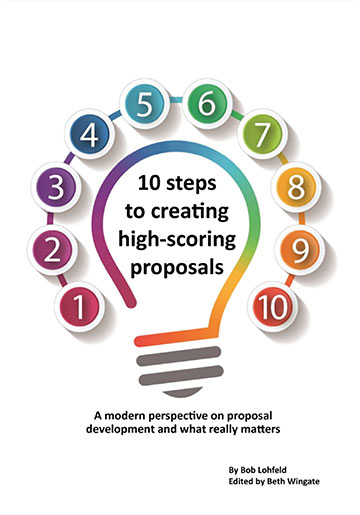The Proficiency Path: How to Excel When Writing an OTA Response

Achieving excellence in transitioning from traditional Federal Acquisition Regulation (FAR) contracts to Other Transaction Authority (OTA) can be challenging. However, mastering this process offers the ultimate edge in leveraging flexibility for innovative growth solutions. While a traditional request for proposal (RFP) necessitates strict compliance with established requirements, OTAs offer a more adaptable approach for presenting innovative solutions to the government. Let’s explore the key elements involved in responding to an OTA.
Preparing to Respond to an OTA
To effectively respond to an OTA, you must understand its flexibility in comparison to traditional FAR contracting. OTAs prioritize criteria that emphasize technical innovation and potential for success. Understanding the allowable work scope is crucial, as is focusing on innovation and agility. Before writing your response, consider these additional steps:
- Build a Diverse Team: Form a team with both traditional and nontraditional defense contractors, small businesses, tech startups, and research centers. Prioritize partnerships that bring unique skills and innovations.
- Research the Funding Agency: Learn not just the OTA rules, but also the specific agency’s goals and priorities. Not every agency manages an OTA in the same way.
- Understand the Evaluation Criteria: OTAs have custom criteria centered on technical innovation and potential for success. Be aware that these are less rigid but equally important.
Writing to an OTA
Once you have completed the preliminary steps, begin the writing process with the following approach:
Outline Your OTA Response
- Introduction: Clearly articulate your understanding of the OTA’s goals, as opposed to traditional proposals that typically offer an overview. Concisely outline your team’s approach and the unique value your team brings.
- Solution Overview: Provide a summary of your solution, emphasizing innovation and how it aligns with the agency or consortium’s goals.
- Technical Plan: Detail the technical aspects of your plan, focusing on innovative approaches and potential impacts.
- Management and Team: Highlight your team’s strengths, nontraditional partnerships, and how the team will successfully implement the proposed solution.
- Benefit and Impact: Discuss the anticipated benefits, both to the agency and to the broader mission objective.
Stay Aligned with the OTA Requirements
- Ensure all sections of your proposal directly address the OTA’s objectives and evaluation criteria.
- Use clear, straightforward language to enhance clarity and understanding.
Emphasize Innovation in Your OTA Response
- Focus on the innovative aspects of your proposal; OTAs value creativity and novel solutions.
Provide Evidence and Data
- Support your claims with data, case studies, or past performance that demonstrates your capability to implement innovative solutions successfully.
- Utilize visuals, such as charts and graphs, to effectively convey complex information.
Review and Revise
- Thoroughly review your draft for coherence, alignment with the OTA’s goals, and compliance with submission guidelines.
- Consider peer review from team members to ensure all aspects of the proposal are robust and well-articulated.
Tips for Writing an Effective OTA Proposal
- Be Concise and Focused: Write clearly and directly. Avoid unnecessary jargon or overly technical language that may confuse your message.
- Highlight Differentiators: Highlight unique aspects, such as innovative technologies or unique partnerships, that other offerors cannot claim.
- Maintain Reader Engagement: Use headings, bullet points, and white space effectively to break up text and maintain the reader’s interest.
- Visuals and Layouts: Use visuals strategically to illustrate key points and enhance reader understanding, ensuring they align with the text’s narrative.
By focusing on these strategies, you can craft a compelling proposal that captures the essence of your innovative solution, aligns with the OTA’s goals, and stands out in the evaluation process.
Tips to Offerors
- Engage Early with the Agency: Establish communication with the issuing agency as early as possible to gain insights and clarify any ambiguities regarding the OTA requirements and objectives.
- Leverage Feedback Loops: If possible, seek interim feedback from agency representatives on preliminary proposal drafts or ideas to ensure alignment with their expectations.
- Focus on Risk Mitigation: Highlight your strategies for identifying and mitigating risks associated with your proposed innovative solutions.
- Take a Storytelling Approach: Consider employing a storytelling technique to craft a compelling narrative that connects your innovative solution with the agency’s goals, enhancing engagement and understanding.
Conclusion
Navigating an OTA requires a strategic blend of preparedness and innovation. By emphasizing novel approaches and support from nontraditional partners, your proposal can stand out in this competitive landscape. Engage early, utilize feedback, and tell a compelling story to connect your vision with the agency’s needs. With these strategies, you are well equipped to transform opportunities into success. If you need assistance writing, reviewing, or preparing an OTA proposal, please contact Lohfeld Consulting today.
Relevant Information
By Dana Katalinas, Vice President, APMP Member, GPA Member
Lohfeld Consulting Group has proven results specializing in helping companies create winning captures and proposals. As the premier capture and proposal services consulting firm focused exclusively on government markets, we provide expert assistance to government contractors in Capture Planning and Strategy, Proposal Management and Writing, Capture and Proposal Process and Infrastructure, and Training. In the last 3 years, we’ve supported over 550 proposals winning more than $170B for our clients—including the Top 10 government contractors. Lohfeld Consulting Group is your “go-to” capture and proposal source! Start winning by contacting us at www.lohfeldconsulting.com and join us on LinkedIn, Facebook, and YouTube(TM).
Paperback or Kindle
10 steps to creating high-scoring proposals
by Bob Lohfeld
contributors Edited by Beth Wingate
Subscribe to our free ebrief
Teaming friends, frenemies, and enemies—12 tips to mitigate harmful effects
Did you know that contracting officers spend up to 20% of their time mitigating disputes between teaming partners? In an informal poll we conducted on LinkedIn last month, 40% of respondents classified their teaming partners as “frenemies” on their last bid.
Explore Further
- Advice (539)
- AI (28)
- APMP (18)
- Army MAPS Contracts (3)
- Business Development (294)
- Capture Management (266)
- Complex Technology Grants Services (26)
- Favorite Books (5)
- GenAI (4)
- Go-to-Market (27)
- Graphics (5)
- Lohfeld Books (2)
- NASA SEWP VI Contracts (2)
- Navy SeaPort-NxG Contracts (2)
- NIST MSE Grants (1)
- NIST NAPMP Grants (2)
- Past Performance (63)
- Post-submission Phase (14)
- Pre-RFP Preparation (264)
- Proposal Management (339)
- Proposal Production (75)
- Proposal Reviews (38)
- Proposal Writing (107)
- Pursuit Phase (108)
- Research Report (4)
- Resources (63)
- Tools & Tips (421)
- Training (13)
- Uncategorized (223)

Sign Up for INSIGHTS and Download your FREE book
We'd love to help you with your proposals. Enjoy our complimentary Lohfeld Consulting Group Capture & Proposal Insights & Tips book with your FREE subscription to our Insights Newsletter.
GET YOUR FREE BOOK


